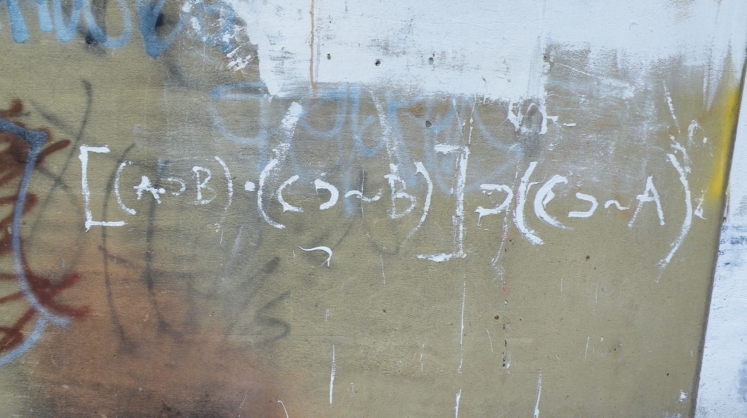If everything can be ‘curated’, what happens to the figure of the curator? In the award-winning book, Curationism: How Curating Took Over the Art World and Everything Else, art critic David Balzer traces the historical transformation of the value and labour of curation as a profession as its practices come to permeate everyday life. Olivia Spyth recommends this book to readers interested in a critical history of the curator and art exhibitions as well as to those looking for a discussion of identity and value in the digital age.
Curationism: How Curating Took Over the Art World and Everything Else. David Balzer. Pluto Press. 2015.
 Curationism: How Curating Took Over the Art World and Everything Else is a critical disquisition on the current state of the art world and the role of the curator within it. David Balzer discusses the historical development of the curator, whose position has changed considerably from initial understandings of their function as carers for objects. Balzer claims that since the mid-1990s, ‘we are living in the curationist moment’, in which not only museums and exhibitions are curated, but also businesses, concerts, Instagram accounts and everything down to our grocery shopping (2-3). As a result, our everyday lives become a curated experience, and it is only through curating that the importance and value of an object or experience can be transmitted. Balzer points out that this causes problems for common understandings of the figure of the curator and their influence on areas not commonly associated with curation.
Curationism: How Curating Took Over the Art World and Everything Else is a critical disquisition on the current state of the art world and the role of the curator within it. David Balzer discusses the historical development of the curator, whose position has changed considerably from initial understandings of their function as carers for objects. Balzer claims that since the mid-1990s, ‘we are living in the curationist moment’, in which not only museums and exhibitions are curated, but also businesses, concerts, Instagram accounts and everything down to our grocery shopping (2-3). As a result, our everyday lives become a curated experience, and it is only through curating that the importance and value of an object or experience can be transmitted. Balzer points out that this causes problems for common understandings of the figure of the curator and their influence on areas not commonly associated with curation.
Balzer illustrates the problem of the contemporary curator in two sections, respectively titled ‘Value’ and ‘Work’, preceded by a prologue introducing contemporary curator Hans Ulrich Obrist. Written for a non-academic, non-art world audience, the book familiarises the reader with important figures and events within the art world, beginning with Obrist, who is considered a star curator. Balzer uses Obrist as an example of the modern curator who is not only responsible for curating exhibitions and art installations, but also acts as a public figure. Star curators have gained the status of art-world celebrities, which raises questions about the value and work of the curator. How did their position of ‘imparter[s] of value’ develop, and what kind of value does their work have apart from their celebrity status (3)? What do modern celebrity curators actually do, aside from lending their names and faces to exhibitions to generate audiences and income? These questions are critically discussed in the following two sections of the book.
The first part, ‘Value’, gives a chronological background to the curatorial profession. First emerging in Roman times, the position of curator described bureaucrats or priests who oversaw regions and parishes. The term ‘curator’ began to be used in an art context in the eighteenth century, usually describing a collector of curious and unique objects intended for private purposes. The use of curator in a professional context became common as museums like the Louvre were established and attempted to chronologically display their material wealth, resulting in stuffed, unlabelled exhibitions. The curator was seen as a caretaker of objects, cataloguing and collecting. Balzer points out that in this period, the position of the curator was a passive one as curators were expected to answer to big institutions or private collectors.
The change towards a more active and self-determined role did not take place until the late nineteenth century when avant-garde art movements became more prominent. With an increasing number of artists challenging ideological and commercial concepts, the art world needed an entity that could give meaning and sense to new, abstract forms of art. It was during the 1960-70s that the curator became seen as a connoisseur: ‘Curators no longer tended ground, but secured, organized and landscaped it’ (40). The curator has since emerged as a full-time professional, acting as mediator between artists and institutions. They are seen as imparters of value, using the artist’s work and the museum’s space to create complex exhibitions, making curating an art of its own. Curators are no longer passive cataloguers, but are powerful mouthpieces of big institutions.
 Image Credit: (Sigfrid Lundberg)
Image Credit: (Sigfrid Lundberg)
This rise in the importance and influence of the curator has had an impact on understandings of the profession. In 2011 The Oxford English Dictionary added the verb ‘to curate’ to the dictionary; this transformation of curator into a verb illustrates how the activity of curating has invaded everyday life. As curators become powerful celebrities of the art world where they present themselves as connoisseurs of taste and trends, other institutions begin to imitate this concept for their own benefit. Balzer calls attention to instances where the boundaries between the art world and the ‘normal’ world begin to blur. Architects who design exhibition spaces are commissioned to work on the interiors of boutiques, fashion designers like Tom Ford or Karl Lagerfeld begin to collect art and exhibit it in their stores and singers like Madonna or Kanye West present themselves and their style to attract audiences. Practices like these are used by stars and companies to evoke an air of distinction, to ‘supercharge’ their brands and to impart value for themselves or their products (75).
As a result, Balzer identifies two phenomena. First, actors and institutions outside of the art world use curatorial practices to suggest that their content has been carefully selected for customers, thus creating an impression of glamour around their products. Second, the profession of the curator transcends the boundaries of the art world and becomes a lifestyle, adoptable by everyone. Nowadays, everyone can curate their own brand, and prominent brands and museums hire guest curators who use their image to add value to an exhibition or product. Professional curators are overlooked, while famous guest curators are given the privilege to represent, although they may lack knowledge about professional curating.
In ‘Work’, the second part of Balzer’s discussion, the labour of curatorial activity is examined, which is less visible than the value produced by it. With the rising popularity of curation as a profession, study programmes have emerged to equip students with the required skills that new curators traditionally learnt on the job. These programmes can lack opportunities for practical experience, requiring students to take on often unpaid internships outside of or after their studies. Moreover, these programmes emphasise the curatorial practices of star curators, which include meeting artists, giving talks and acting like a ‘CEO of a company’ (99). The reality of a curator is more that of project management, calculating costs, negotiating loans, budgeting and reaching out to the media to advertise exhibition concepts. This side of the profession is necessary, but is being overshadowed by the hyped image of the star curator, creating the image of a celebrity who barely works, but only represents.
Through the popular image of the curator as an imparter of value, every area outside the art world becomes dominated by imitators of this profession. The opportunities of the digital age enable everyone with an internet connection to curate. Whether it is social media profiles, tumblr blogs, Spotify playlists or using digital tools to plan weddings and other events, the act of curating is so popular because it grants almost instant gratification. Balzer explains that through assembling virtual collages of themselves, people can show off their identities. However, this creates the need to ‘micromanage’ every aspect of life, imitating the image of the sleek and perfect star curator (127). Thus, Balzer claims that curating became a compulsive practice used to seek attention from large audiences. As the number of people calling themselves curators or sharing curated content is constantly rising, curating therefore appears like a lifestyle, simultaneously misrepresenting the value and work of the professional curator.
In Curationism, Balzer analyses current developments in the art world and calls for a return to more traditional understandings of the role of the curator. Although a very compact book, it is packed with critical discussion and highlights important aspects of the position of the curator and contemporary understandings of their responsibilities. It offers an interesting interpretation of our everyday habits and how they are dictated by the urge to create a perfect image. I recommend this book to readers interested in a critical history of the curator and art exhibitions, and to those looking for a discussion of identity and value in the digital age.
Olivia Spyth recently graduated with an MA in Twentieth-Century Literary Studies from Durham University, after having completed her BA in American Studies and Media and Communication Studies at the University of Hamburg. Currently, she acts as the Managing Editor of Perfect Daily Grind, a quickly developing online publication, and also writes her own articles. Her research interest lies in the period of American Modernism and contemporary literature, with a special focus on all forms of life writing. Read more features by Olivia Spyth.
Note: This review gives the views of the author, and not the position of the LSE Review of Books blog, or of the London School of Economics.








1 Comments